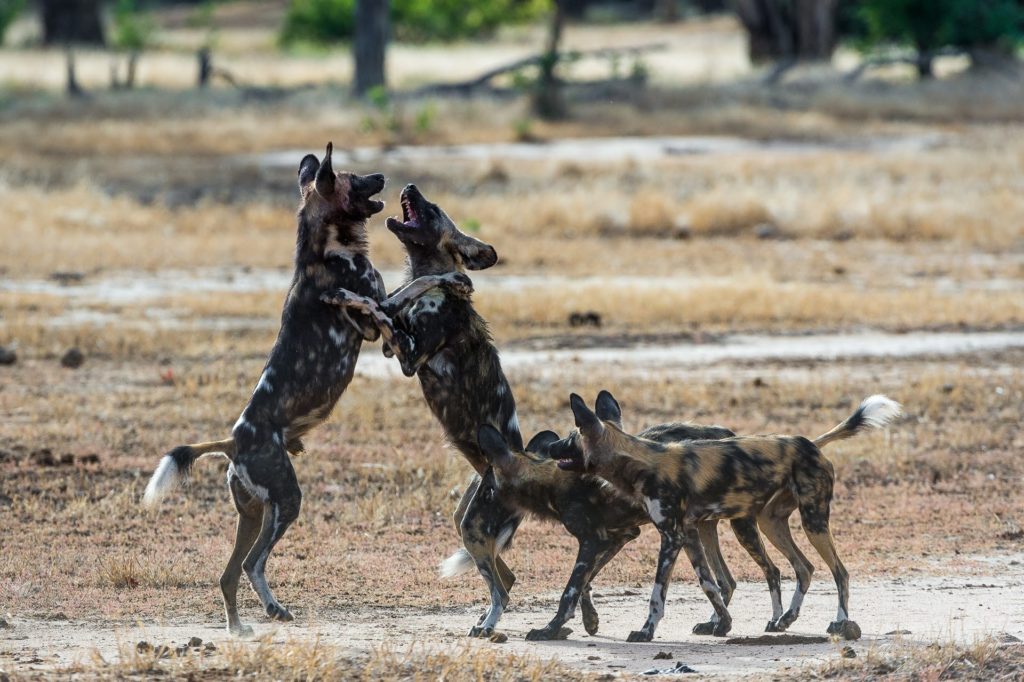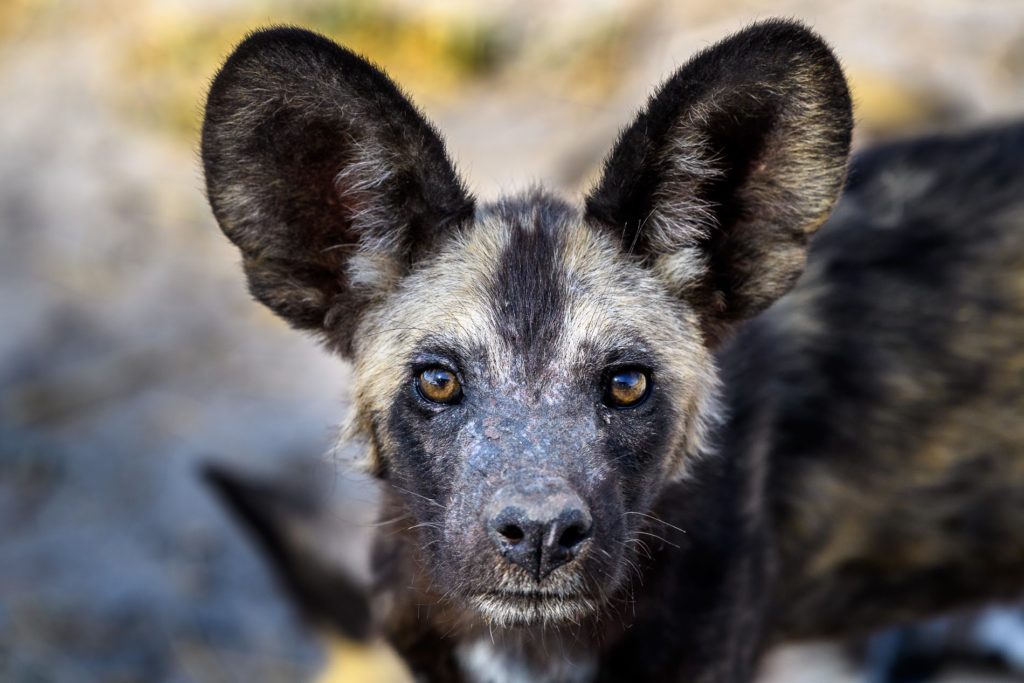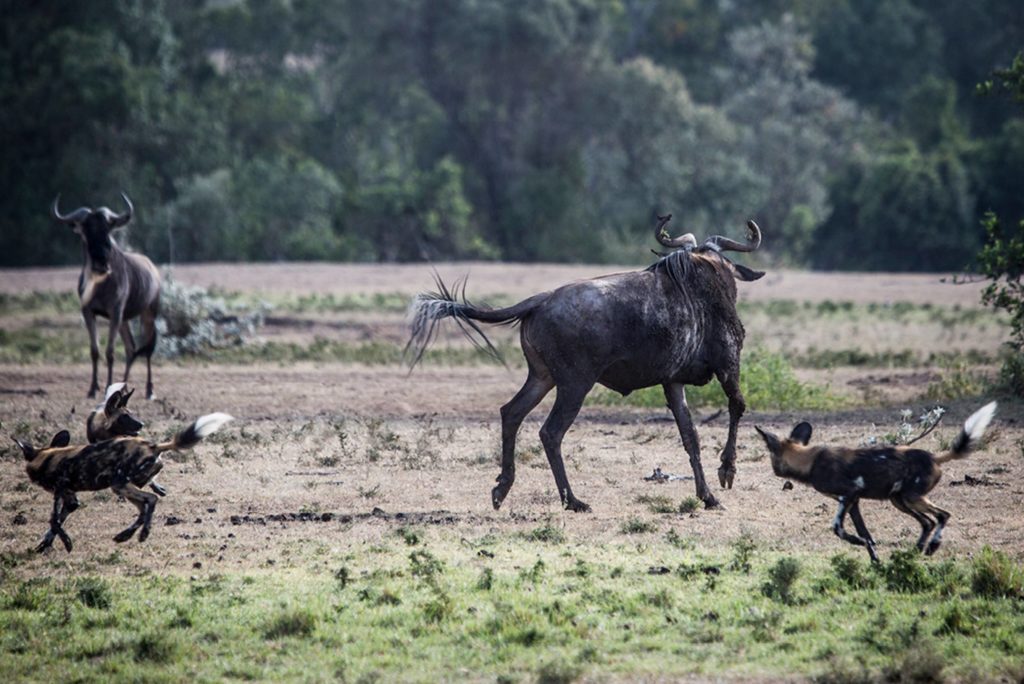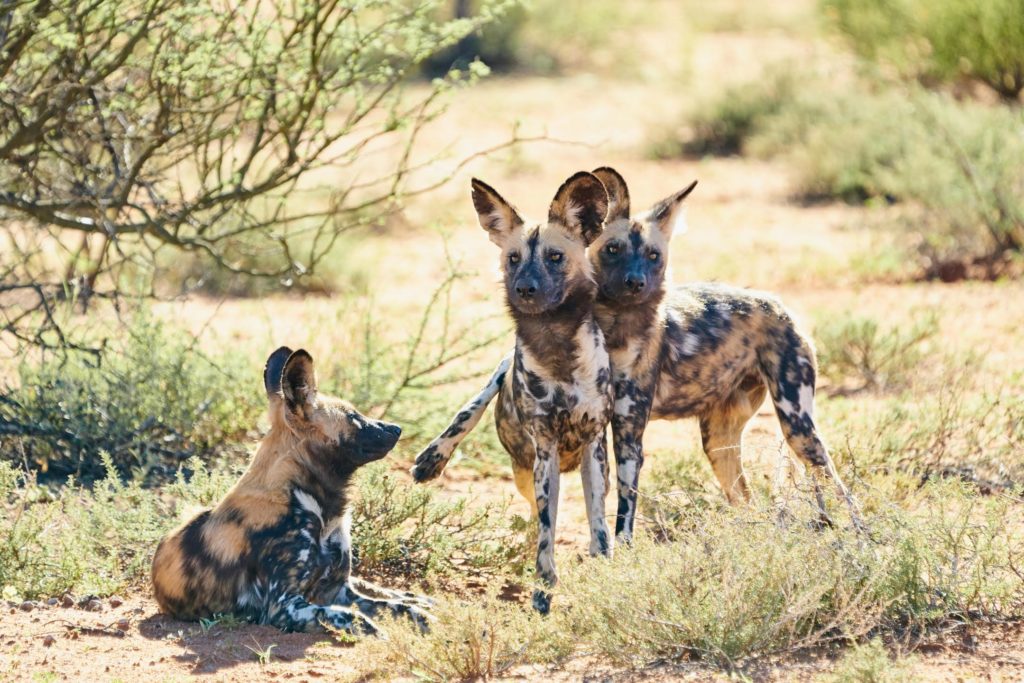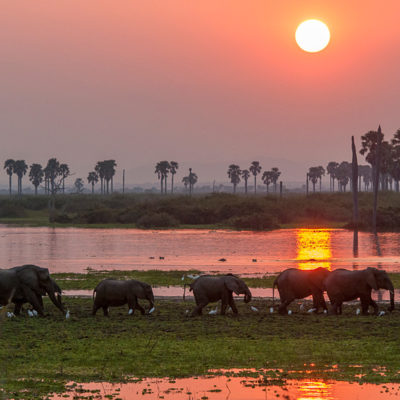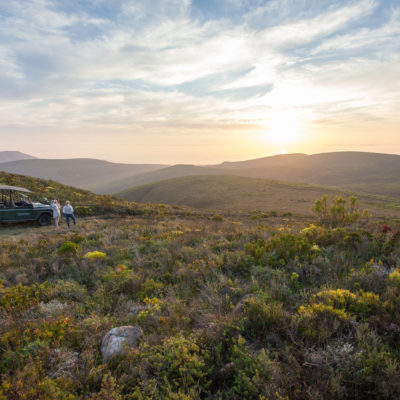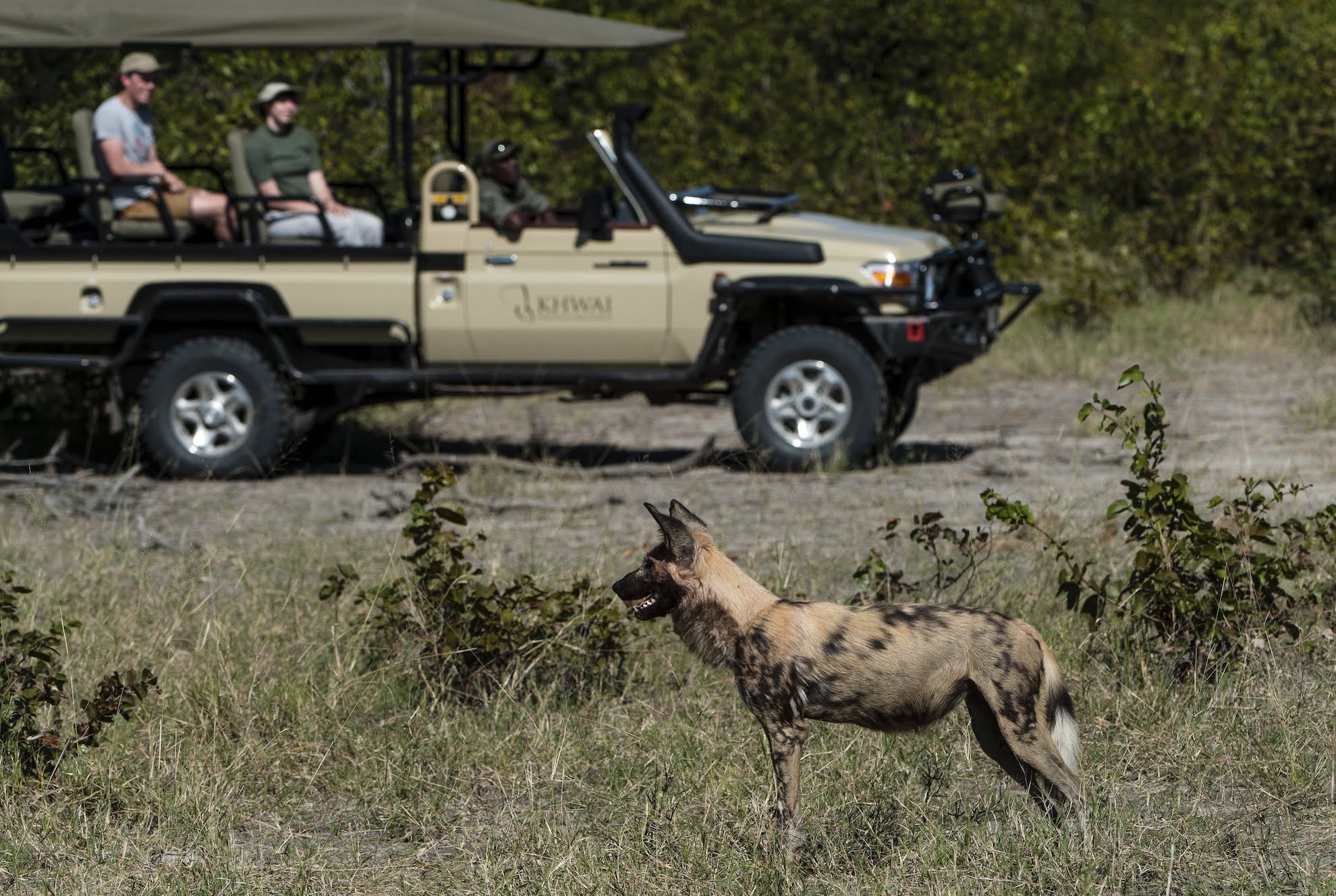
Can Responsible Tourism Help Support Wild Dog Populations?
African Wild Dogs, also known as Painted Dogs because of their beautiful mottled fur patterns, are one of the most endangered mammals in the world. According to the World Wildlife Fund for Nature (WWF), there are only approximately 1,400 mature wild dogs left. The largest populations are located in South Africa and Southern West Africa, with around 30% of all remaining wild dogs living in Botswana. One of the best places for spotting an African wild dog is the Moremi Game Reserve, which is home to between 150 and 200 of them. The varied landscape around the Okavango Delta creates an ideal habitat of dry plains, forest and grassland where wild dogs can thrive, but their numbers continue to plummet.
Wild Dogs
Wild dogs can be identified by their big round ears, white-tipped tails and long legs. Unlike most species of dog, they only have four toes per foot as opposed to five. Their long fluffy coats can be a mixture of red, black, brown, white and yellow fur, and every dog has a completely unique coat. They are pack animals and tend to travel in groups of 6-20+. The packs are social and form strong bonds with one another, and will work together to aid sick or injured members of the group by sharing food.
New pups are also given priority when feeding over the dominant members. Packs will also work together when hunting in order to bring down prey. Wild dogs can run at an incredible speed of up to 44 miles per hour, and will chase prey across the open plains by running in relay. The pack will have to run for miles, burning up a lot of energy for a chance to catch a meal. Watching a wild dog family hunt is a very rare and exciting spectacle. Safari goers must zoom across the plains in a heart-racing pursuit, just to keep up with the pack.
The rapid and prolonged chase can swiftly end in either success or failure, meaning the wild dogs will either be rewarded with a meal, or be forced to repeat the process – tired and with empty bellies. They tend to hunt antelope but are also known to go after larger prey such as wildebeest. When a dog tires, another member of the pack will come forward and take their place, keeping in constant communication with each other so that they can collaborate.
Why are they so Endangered?
Unfortunately, the friendships within wild dog packs can also be a hindrance. Poachers set up illegal snares in order to capture animals. While their main target is not always the wild dogs, one will occasionally get caught up in these traps. The rest of the pack will then go searching for their missing member and refuse to leave them behind. Other members of the pack are then at risk of becoming trapped in snares, resulting in multiple fatalities. The pack are a family, and will grieve the loss of any members much as humans would.
Any deaths within the pack can have a huge negative impact on the rest of the group. When wild dogs stray too close to human communities, conflict with local farmers presents another huge threat to their remaining populations. Wild dog packs have a successful hunt rate of around 80%, according to Conservation Africa, which has resulted in them being hunted by farmers who fear for their livestock.
Wild dogs have been forced to set up territories close to humans as a result of habitat fragmentation. Packs tend to travel approximately 30km each day, and their territories can span up to 10,000 square kilometres. Humans imposing on a pack’s territory means that the wild dogs are forced to reduce their hunting ground which makes it more difficult for them to find prey, especially as they have to compete against other predators such as lions and leopards. This results in family packs travelling to unprotected areas where they are more at risk. Wild dogs are also susceptible to the same diseases as domestic dogs, such as rabies and canine distemper, which can be transmitted when humans impose on their habitats.
How can Sustainable Tourism Help?
Eco-friendly and sustainable tourism limits the impact which humans have on the natural landscape. A number of our Pure Break adventures are based at camps designed to blend in with their natural surroundings, made from natural materials that are sustainably sourced from the local environment. This is less disruptive for the wildlife that lives here and reduces the risk of pushing wild dog populations from their territory. Non-permanent safari camps cause no lasting effects on the landscape, and once they are dismantled, the site can quickly return to how it was and be reclaimed by wildlife and the surrounding environment.
These camps are also kept small and exclusive to limit the number of people and safari traffic that encroach on wildlife territories. Luxury safari camps allow guests to enjoy the privilege of experiencing private safaris and tailored excursions while supporting the local community and helping to fund initiatives such as anti-poaching organisations which help to protect wild dog numbers by monitoring populations and combating illegal hunting snares.
Educational programmes that work with local communities can teach people about the importance of wildlife and conserving animal habitats. A number of safari camps run initiatives with local communities that support local people and teach them how to avoid human/wildlife conflict. For example, Wilderness Safaris run a Children in the Wilderness educational programme that allows local children to learn about conservation and the positive benefits of ecotourism.
Wilderness Safaris also founded the Wilderness Wildlife Trust, which engages with projects to support local communities so that they can encourage better engagement between local people and wildlife. And they are not alone; Sanctuary Retreats, andBeyond and Desert and Delta also run projects that contribute to wildlife spaces and local communities in order to show the benefits of conserving wildlife.
Each initiative reinforces the protection of both livestock and wild dogs, helping local communities to see wildlife and tourism in a positive light. By educating local communities of the importance of protecting unique wildlife and demonstrating how it is extrinsically linked to attracting sustainable tourism, that can ultimately bring opportunity, prosperity and careers to the people. In return, Sustainable tourism can direct willing donors to projects that help support rural communities.
Tourism is essential in protecting these beautiful creatures. Without the funding that sustainable tourism provides, wild dog numbers will continue to drop at a horrifying rate. As humans have been so responsible for the decline in wild dogs numbers, it is now our responsibility to ensure that they do not go into extinction. These empathic and intelligent canines are the most endangered carnivore in South Africa.
Unless humans are able to continue to learn to understand and protect them, the next generation of travellers may be unable to enjoy the heart-racing sensation of watching a pack of wild dogs race across the plains. And they will become yet another species mankind has wiped out due to conflict, disease outbreaks and habitat fragmentation.
“From exploring the threats to wild dog populations, and the crucial impact that conservation work has on preventing their numbers from declining further, I have learned that tourism is vital in supporting funding these initiatives. Learning about wild dogs has also given me a deeper understanding of these intelligent and empathetic creatures, and why they must be protected.”

